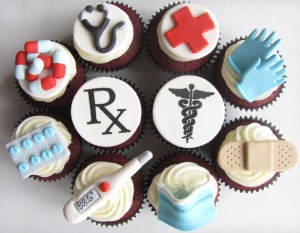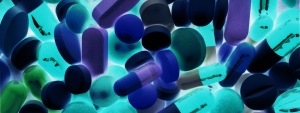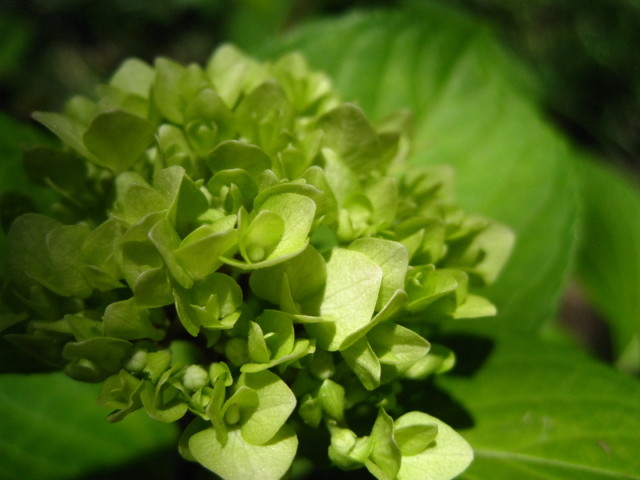All in the mind …. the placebo effect (2/3)
Posted: July 25, 2013 Filed under: Health, Research, Uncategorized | Tags: alternative medicine, alternative therapies, Classical conditioning, double-blind testing, endorphins, health care, medical intervention, Nocebo, Placebo, positive thinking, Randomized controlled trial, sceptics, skeptics, wellbeing 1 CommentIn a previous post on July 16, 2013, ‘All in the mind… the placebo effect’ I described the concept and origins of placebos and the placebo effect. This post shifts focus to the changing perception of placebos within the field of scientific research and clinical practice using published articles framed by counter arguments. The literature largely signals a growing interest in the use of placebos – not because researchers believe placebos have the power to trick the mind into healing the body but because there is an increasing body of research providing evidence linking chemical reactions in the brain to development of our expectations which moderate and influence our behaviour and perceptions. (Scott et al 2007)
[I have included a couple of short videos which entertainingly explore the placebo effect…. and so if you aren’t in the mood for reading, or short of time scroll straight down to the visual aids. Alternatively if you are in the mood for some interactive experience watch the video at the end and follow the accompanying link to test one person’s idea of the placebo effect through an app. I am by no means recommending the app as I have not tested it myself being still rather old fashioned when it comes to phones but it could be fun – and by all means let me know. ]
And now back to the topic at hand….
Placebos have been critical in the running of randomized clinical trials as a comparison marker. As Kaptchuk writes in The Lancet (1998), ‘Until the RCT, medical therapy became legitimate because of beneficial outcomes; after the RCT, a medical intervention was only scientifically acceptable if it was superior to placebo… method became more important than outcome’, (p. 1724). Critics also recommend that a third ‘no treatment’ control group is used to gauge the placebo effect.
In some cases, it has also been shown that well-established prescribed medical interventions are no more effective than a placebo (or perhaps I should say the placebo is no less effective) suggesting that the effectiveness of the branded product is probably only due to the placebo effect. This seems quite profound when considering our increasing consumption of drugs and ballooning expenditure in the over-burdened health system. To read of widely prescribed anti-depressants such as Prozac testing no better than a placebo seems shocking. And this is not to suggest the anti-depressants in question are just ‘sugar pills’ – just their ingredients are not active for that specific illness. A survey of General Practitioners in the US revealed that 50% regularly prescribed ‘placebos’. This raises another concern regarding the possible side effects of non-active medical inventions (whether a drug or procedure) with other active ingredients upon people’s health which could be avoided.
So how can any non-active treatment seemingly be so effective?
‘The scientific study of the placebo and nocebo effect is part of the exciting advances in modern neuroscience on the way in which the brain normally controls many bodily functions. We do know that this is mostly done by operating below conscious awareness’, writes Marcello Costa, Professor of Neurophysiology, Department of Physiology at Flinders University.
(http://theconversation.com/mind-over-matter-the-ethics-of-using-the-placebo-effect-3752)
Animation: ‘The Strange Powers of the Placebo Effect’ from The Professor Funk.
The body of current research points to several factors underlying the placebo effect which are only now being unravelled through more extensive research and the use of such tools as magnetic resonance imaging (MRI) scans to understand how the brain reacts to medical intervention. Between accumulated research findings and new MRI brain scans taken during testing as proof, it appears the ‘effectiveness’ of placebos which induce a sense of increasing wellbeing and also alleviate specific types of symptoms is linked to the opioid system. Researchers have found that placebo effects can stimulate real physiological responses, from changes in heart rate and blood pressure to chemical activity in the brain, in cases involving pain, depression, anxiety, fatigue, and even some symptoms of Parkinson’s disease. From research in the late 1970s we have known the placebo effect is linked to the release of endorphins which are the brain’s ‘natural pain relievers’ when it was shown that blocking the release of endorphins removed the placebo effect (Feinberg 2013). We can be conditioned to release such chemical substances as endorphins, catecholamines, cortisol, and adrenaline. Telling research participants they will likely experience adverse effects from the placebo treatment also reliably leads to them reporting those same symptoms – this is called the nocebo effect.
Challengers to alternative medicine practitioners and those who believe it is purely a case of ‘positive thinking’ propose the placebo effect can be largely attributed to a mix of the following mechanisms;
- Natural history where illnesses naturally peak and then taper off with recovery – patients usually seek medical treatment at the peak and so recovery correlates with treatment;
- Regression to the mean (natural fluctuations in illnesses);
- Standard medical and nursing care;
- Impact of modified rest, diet, exercise and relaxation;
- Reduction of anxiety by receiving a diagnosis and prescribed treatment;
- Influence of the doctor-patient relationship (including the desire by trial participants to ‘give the right answer’);
- Expectation of recovery; and
- Classic conditioning (which on a very basic level refers to our learned belief associating medical intervention with recovery but can also be more complex).
It is, however, difficult to unravel and measure these often inter-dependent mechanisms, especially when their significance will naturally vary from patient to patient. (McCann et al 1992)
Studies have also found the placebo effect is influenced by the manner of the placebo delivery and these variables needs to be accounted for in trial results. It has been shown in the last decade that variables such as the form of placebo delivery (pill versus injection, or pill colour or size); demeanour of the placebo provider (level of verbal interaction, body language, perceived level of ‘care’,etc); framing of the procedure; aims and expectations to participants; physical environment (hospital versus standard room); and there are now even claims that individuals will be variously disposed towards the placebo effect dependent upon their genetic make-up (Furmark 2008). There is also a recognised predisposition of participants to try to please with their responses which may skew results. Hence the push for a double-blind testing approach in trials to measure these influences.
Dean Leyson’s : The Placebo Effect (BTW if you can’t pick his accent, it’s Belgian)
Here is a list of placebo influencing factors:
- trusted brand-name drugs work better than others;
- expensive treatments work better than cheaper ones;
- green pills may be better for phobias and anxiety;
- red and yellow pills may work better for depression;
- sham devices may work better for pain than pills;
- treatments work better if administered by a practitioner perceived as being kind, warm and caring; and
- in general, invasive treatments (eg. surgery, injections, procedures) seem to work better than less invasive ones.
The sense of recovery and healing people credit to alternative therapies is also attributed by sceptics to a placebo effect. For example a study undertaken by Harvard Medical School researchers demonstrated that of the participants suffering from Irritable Bowel Syndrome those who experienced the greatest alleviation of discomfort had who received the most attention and care in the form of pretend acupuncture and non-active medication. All participants received fake treatment but were either given a minimal or high level of attention and interaction from those administering the treatments.
Numerous studies have demonstrated the placebo effect can be a significant factor in people’s sense of recovery – even if this is subjective on the part of the patient rather than an objective reduction in illness. This is why a growing number of researchers and medical practitioners believe placebos should no longer be wholly defined by their inert content/ attribute. Focus should be shifted to what the, ‘placebo intervention – consisting of a simulated treatment and the surrounding clinical context – is actually doing to the patient. Accumulated evidence suggests that the placebo effect is a genuine psychobiological event attributable to the overall therapeutic context,’ (Finniss et al 2010, p. 686). Thinking about this and the evidence of the placebo effect for pain relief, I wondered whether there was a role for the placebo in palliative care where it would perhaps raise less ethical issues. Something I will discuss in my final post on the placebo effect… to come.
In a US study involving asthma sufferers, it was shown the placebo had little effect on the measurable physical outcome of lung function (equal to the ‘no treatment’ control group) measured through lung capacity testing; versus the administration of a standard albuterol bronchodilator. However, the participants themselves reported improvements in terms of relieving discomfort and self-described asthma symptoms equal to albuterol. This supports the theory a ‘subjective’ placebo effect exists and that a placebo treatment may be just as effective as active medication in improving patient-centred outcomes. ‘It’s clear that for the patient, the ritual of treatment can be very powerful,’ notes Kaptchuk. ‘This study suggests that in addition to active therapies for fixing diseases, the idea of receiving care is a critical component of what patients value in health care. In a climate of patient dissatisfaction, this may be an important lesson.‘
Here’s how to administer your own placebo effect…. but at your own risk…
Website: Placebo Effect – A Beginner’s Guide http://www.placeboeffect.com/placebo-effect/
[NB having read the webpage and various blog posts of the app’s creator I have to say I don’t endorse much of what is written… a little too much ‘feel good’ content which in my opinion doesn’t accurately reflect scientific research despite using it to support their advocacy of the placebo effect… and business idea]
And here’s your very last little pill … There is also a published study (Furmark 2008) which claims to have found a certain variation of a gene linked to the release of dopamine which makes the individual far more susceptible to the sham treatment and therefore also the placebo effect. The ability to screen prospective trial participants based upon a lower susceptibility to the placebo effect is argued for on the basis of creating more efficient medical trials, reducing the time and costs of testing and therefore getting effective treatments onto the market faster and more cheaply to benefit patients.
Some recommended further reading:
http://theconversation.com/not-just-smoke-and-mirrors-placebos-place-in-modern-medicine-4587
A third and final post will discuss contrary views and ethical considerations attached to the administration of placebos. Did you know placebos are still regularly ‘prescribed’ by GPs here and overseas?
Until next time,
the domestic scientist.




[…] All in the mind …. the placebo effect (2/3) (domesticsciences.wordpress.com) […]